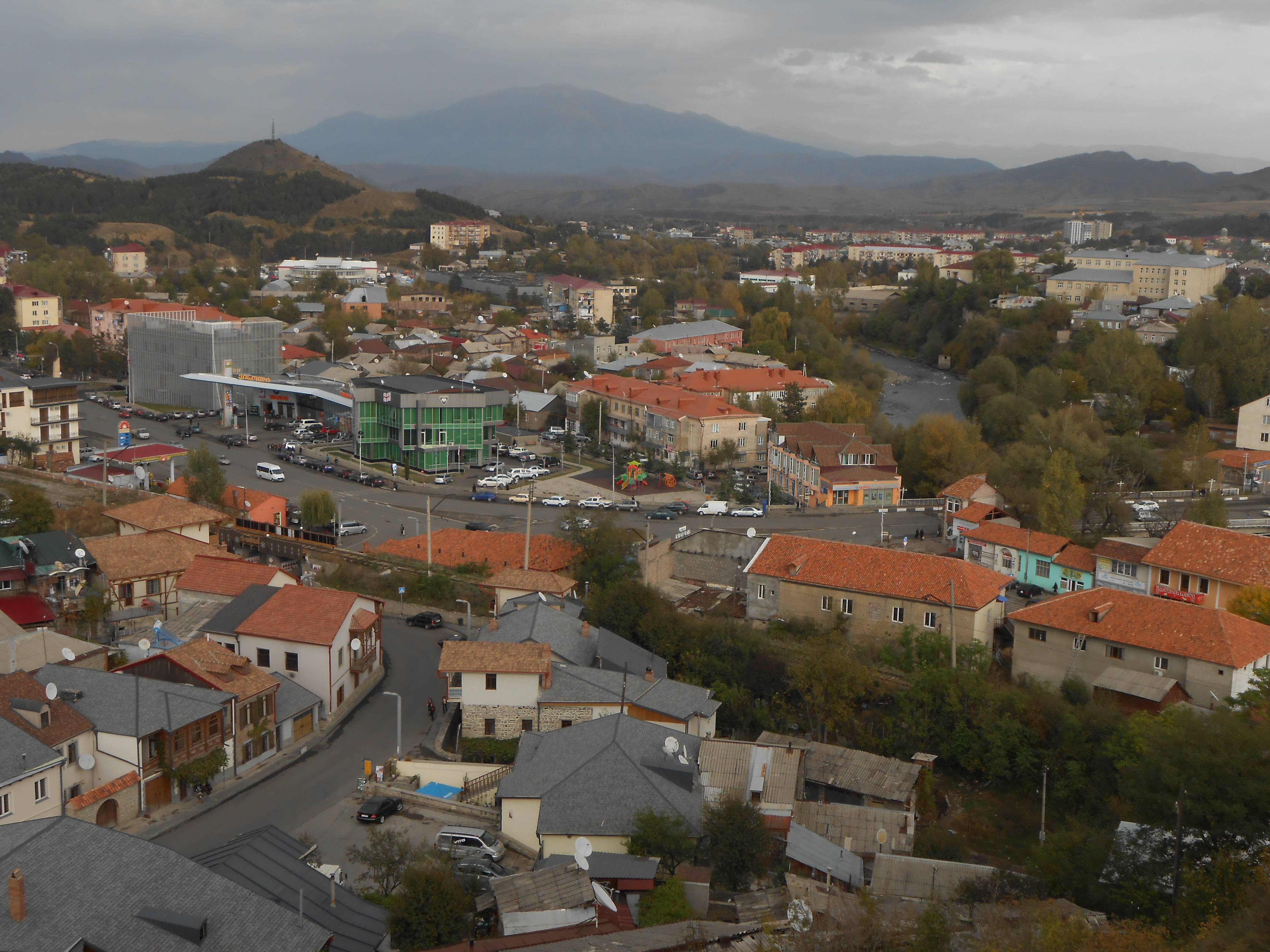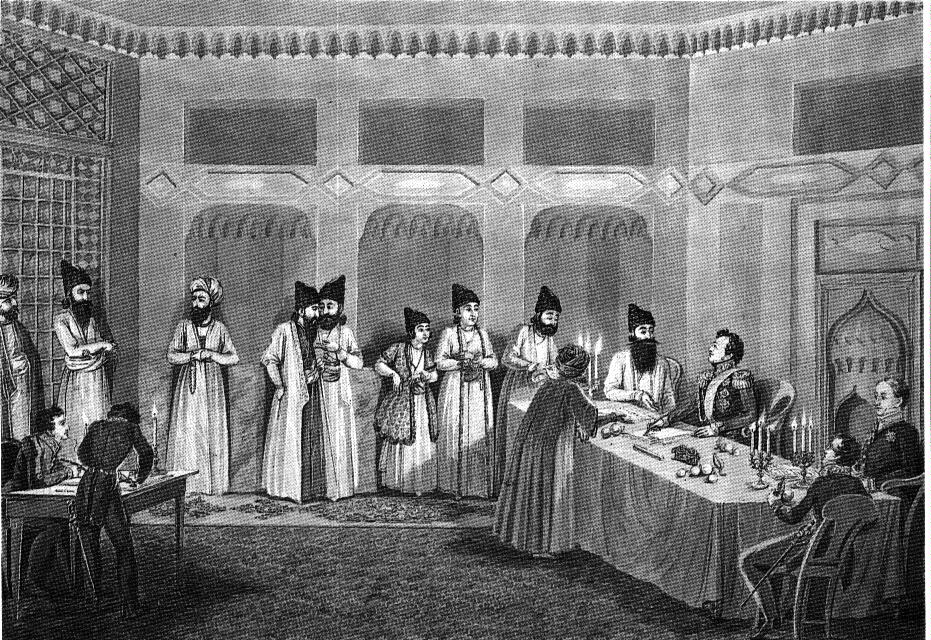|
Rabati Castle
Akhaltsikhe (Rabati) Castle ( ka, ახალციხის (რაბათის) ციხე) is a medieval fortress built in the 9th century under the name "Lomsia Castle" in the city of Akhaltsikhe in southern Georgia, recently globally reconstructed. One of the main attractions of the Samtskhe-Javakheti region along with Vardzia. Name The original name of the fortress in the 9th century was Lomsia, which can be translated from Georgian as "Lion". At the end of the 12th century, Lomsia acquired the new name Akhal-tsikhe, which literally translates as “New fortress”, the Arabic name "Rabati" means fortress. Rabati was usually called the trading quarter at the fortress, earlier mainly Jewish merchants and craftsmen lived in the Rabat quarter, however mainly after reconstruction the name stuck to the all fortress itself. On the official web site of municipality of Akhaltsikhe town and on the official Facebook page of the fortress the name is "Akhaltsikhe (Rabati) Castle" ... [...More Info...] [...Related Items...] OR: [Wikipedia] [Google] [Baidu] |
Akhaltsikhe
Akhaltsikhe ( ka, ახალციხე ), formerly known as Lomsia ( ka, ლომსია ), is a small city in Georgia's southwestern region () of Samtskhe–Javakheti. It is the administrative center of the Akhaltsikhe Municipality and the Samtskhe–Javakheti region. It is situated on both banks of the small river Potskhovi (a left tributary of the Kura), which divides the city between the old city in the north and new in the south. The 9th-century Akhaltsikhe (Rabati) Castle, which was recently restored, is located in the old part of the city. It is one of the main attractions of the Samtskhe–Javakheti region, along with Vardzia, Vale, Okrostsikhe and Zarzma. Toponymy Akhaltsikhe is the Georgian name of the town, which literally means "new fortress". It is attested in Arabic sources as (and ), in Persian as (also spelled as ), and in Turkish sources as . The Azerbaijani village of Axısxa is also named after it, due to the population of the village origin ... [...More Info...] [...Related Items...] OR: [Wikipedia] [Google] [Baidu] |
Ottoman Empire
The Ottoman Empire (), also called the Turkish Empire, was an empire, imperial realm that controlled much of Southeast Europe, West Asia, and North Africa from the 14th to early 20th centuries; it also controlled parts of southeastern Central Europe, between the early 16th and early 18th centuries. The empire emerged from a Anatolian beyliks, ''beylik'', or principality, founded in northwestern Anatolia in by the Turkoman (ethnonym), Turkoman tribal leader Osman I. His successors Ottoman wars in Europe, conquered much of Anatolia and expanded into the Balkans by the mid-14th century, transforming their petty kingdom into a transcontinental empire. The Ottomans ended the Byzantine Empire with the Fall of Constantinople, conquest of Constantinople in 1453 by Mehmed II. With its capital at History of Istanbul#Ottoman Empire, Constantinople (modern-day Istanbul) and control over a significant portion of the Mediterranean Basin, the Ottoman Empire was at the centre of interacti ... [...More Info...] [...Related Items...] OR: [Wikipedia] [Google] [Baidu] |
Castles And Forts In Georgia (country)
A castle is a type of fortified structure built during the Middle Ages predominantly by the nobility or royalty and by military orders. Scholars usually consider a ''castle'' to be the private fortified residence of a lord or noble. This is distinct from a mansion, palace, and villa, whose main purpose was exclusively for ''pleasance'' and are not primarily fortresses but may be fortified. Use of the term has varied over time and, sometimes, has also been applied to structures such as hill forts and 19th- and 20th-century homes built to resemble castles. Over the Middle Ages, when genuine castles were built, they took on a great many forms with many different features, although some, such as curtain walls, arrowslits, and portcullises, were commonplace. European-style castles originated in the 9th and 10th centuries after the fall of the Carolingian Empire, which resulted in its territory being divided among individual lords and princes. These nobles built castles ... [...More Info...] [...Related Items...] OR: [Wikipedia] [Google] [Baidu] |
Madrasa
Madrasa (, also , ; Arabic: مدرسة , ), sometimes Romanization of Arabic, romanized as madrasah or madrassa, is the Arabic word for any Educational institution, type of educational institution, secular or religious (of any religion), whether for elementary education or higher learning. In countries outside the Arab world, the word usually refers to a specific type of religious school or college for the study of the religion of Islam (loosely equivalent to a Seminary, Christian seminary), though this may not be the only subject studied. In an Islamic architecture, architectural and historical context, the term generally refers to a particular kind of institution in the historic Muslim world which primarily taught Sharia, Islamic law and Fiqh, jurisprudence (''fiqh''), as well as other subjects on occasion. The origin of this type of institution is widely credited to Nizam al-Mulk, a vizier under the Seljuk Empire, Seljuks in the 11th century, who was responsible for buildi ... [...More Info...] [...Related Items...] OR: [Wikipedia] [Google] [Baidu] |
Government Of Georgia (country)
, border = , image = , image_size = 200px , alt = , image2 = , image_size2 = , alt2 = , caption = Coat of arms , date_established = , date_dissolved = , state = , country = , polity = , leader_title = Prime Minister , appointed = Parliament of Georgia , main_organ = Cabinet , ministries = See members , responsible = Parliament of Georgia , budget = GEL 24 billion ($9.04 billion) in 2023 , address = State Chancellery 7, Pavle Ingorokva Str.Tbilisi, Georgia , url = The Government of Georgia ( ka, საქართველოს მთავრობა, tr) is the supreme body of executive power in Georgia that implements the domestic and foreign policies of the country. It consists of the prime minister—the head of the government—and ministers and is accountable and responsible to the Parliament of Georgia. The current powers and responsibilities of the government are governed by the amendments of the Constitution ... [...More Info...] [...Related Items...] OR: [Wikipedia] [Google] [Baidu] |
Hagia Sophia
Hagia Sophia (; ; ; ; ), officially the Hagia Sophia Grand Mosque (; ), is a mosque and former Church (building), church serving as a major cultural and historical site in Istanbul, Turkey. The last of three church buildings to be successively erected on the site by the Byzantine Empire, Eastern Roman Empire, it was completed in AD 537, becoming the world's largest interior space and among History of Roman and Byzantine domes, the first to employ a fully pendentive dome. It is considered the epitome of Byzantine architecture and is said to have "changed the history of architecture". From its dedication in 360 until 1453 Hagia Sophia served as the cathedral of Constantinople in the Divine Liturgy#Byzantine Rite, Byzantine liturgical tradition, except for the period 1204‑1261 when the Latin Empire, Latin Crusaders installed their own Hierarchy of the Catholic Church, hierarchy. After the fall of Constantinople in 1453, it served as a mosque, having its Minaret, minarets added ... [...More Info...] [...Related Items...] OR: [Wikipedia] [Google] [Baidu] |
Treaty Of Adrianople (1829)
The Treaty of Adrianople (also called the Treaty of Edirne) concluded the Russo-Turkish War of 1828–29, between Imperial Russia and the Ottoman Empire. The terms favored Russia, which gained access to the mouths of the Danube and new territory on the Black Sea. The treaty opened the Dardanelles to all commercial vessels, granted autonomy to Serbia, and promised autonomy for Greece. It also allowed Russia to occupy Moldavia and Walachia until the Ottoman Empire had paid a large indemnity; those indemnities were later reduced. The treaty was signed on 14 September 1829 in Adrianople by Count Alexey Fyodorovich Orlov of Russia and Abdülkadir Bey of the Ottoman Empire. Terms The Ottoman Empire gave Russia access to the mouths of the Danube and the fortresses of Akhaltsikhe and Akhalkalaki in Georgia. The Sultan recognized Russia's possession of Georgia (with Imeretia, Mingrelia, Guria) and of the Khanates of Erivan and Nakhichevan which had been ceded to the tsar by Pers ... [...More Info...] [...Related Items...] OR: [Wikipedia] [Google] [Baidu] |
Battle Of Akhaltsikhe
The Battle of Akhaltsikhe during the Russo-Turkish War, 1828–1829, may refer to one of the following. Firstly, an offensive battle under the walls of Akhaltsikhe on August 21 (August 9 O.S.), 1828, between 9,000 Russians under Field-Marshal Paskevich on the offensive and 30,000 Turks under Kios-Mahomet-Pasha. The Russians were victorious by a swift and surprise attack in a heavy thunderstorm. They then successfully stormed the Akhaltsikhe Castle (28 (O.S. 16) August 1828) after a week-long siege. Secondly, a successful Russian defense of the same fortress by a garrison under General Nicholas Muravyov from a 20,000 Turkish force under Ahmed-Bey on March 3–16 (February 20 – March 4 O.S.), 1829, during the same conflict. Background Akhaltsikhe is in the center of Samtskhe-Javakheti, with a population of about 20,000. Akhaltsikhe was founded in the 12th century, but the first large settlement had arrived in the 10th century by Guaram Mampal, son of a king Tao. The settle ... [...More Info...] [...Related Items...] OR: [Wikipedia] [Google] [Baidu] |
Prince Paskevich
Count Ivan Fyodorovich Paskevich-Erevansky, Serene Prince of Warsaw ( – ) was a Russian military leader who was the ''namiestnik'' of Poland. Paskevich is known for leading Russian forces in Poland during the November Uprising and for a series of leadership roles throughout the early and mid-19th century, such as the Russo-Persian War of 1826–1828, and the beginning phase of the Crimean War. In Russian history, he is remembered as a prominent military commander, rated on a par with Ivan Dibich-Zabalkansky, commander of the Russian armies during the same time. Paskevich started as an officer during the Napoleonic Wars serving in the battles of Austerlitz and Borodino. After the war, he was a leader in the Russo-Persian War. He was made count of Yerevan in 1828. Afterwards, he became the ''namiestnik'' of Poland in 1831 after he crushed the Polish rebels in the November Uprising. He then helped crush the Hungarian Revolution of 1848. His last engagement was the Crimean ... [...More Info...] [...Related Items...] OR: [Wikipedia] [Google] [Baidu] |







